Warships of the US Navy: Large Cruisers, Portland-class, USS Portland (CA-33), and USS Indianapolis (CA-45)
US Navy Large Cruisers, Portland-class, USS Portland (CA-33), and USS Indianapolis (CA-45)
The Portland class of heavy Cruisers was designed and constructed by the USN in 1930. The two shipsof the class, Portland and Indianapolis, saw extensive service inthe Pacific during the Second World War.
The Portland class displaced just under 10,000 long tons (10,000 t) and featured heavierarmour and armament than previous cruisers. Featuring 8"/55 caliberguns and designed to function as fleet flagships, the Portland classwere intended to fix problems with armament and armour that had been a weaknessof preceding U.S. cruisers.
Portland served in many engagements including the Battle of the Coral Sea, the Battle of Midway, and the Guadalcanal Campaign,where she was severely damaged but nonetheless able to return to service. Shelater fought in the Battle of Leyte Gulf and the Battle of Okinawa. Indianapolis served as a fleet flagship for much of the war and fought in the Battle of the Philippine Sea and the Battle of Iwo Jima. On 30 July 1945, after transporting components for the nuclear weapons Little Boy and Fat Man from the United States, she was torpedoed by the Imperial Japanese Navy submarine I-58.Due to a series of errors and miscommunications her loss was not discovered for several days, and only 316 of her 1,195 crew survived – the greatest single loss of life at sea, from a single ship, in the history of the U.S. Navy. (Wikipedia)
USS Portland (CL/CA–33)
_at_Pearl_Harbor_1942.webp)
(USN Photo)
USS Portland (CA-33) at Pearl Harbor, Hawaii, 14 June 1942, with her crew paraded on deck in "Whites". Note the external degaussing cable fitted to the hull side of this ship.
USS Portland (CL/CA–33) was the lead shipof the Portland class of cruiser and the first ship of the United States Navynamed after the city of Portland, Maine.[1] Launched in 1932, she completed anumber of training and goodwill cruises in the interwar period before seeingextensive service during World War II, beginning with the Battle of the CoralSea in 1942, where she escorted the aircraft carrier Yorktown and picked upsurvivors from the sunken carrier Lexington. She screened for Yorktown again inthe Battle of Midway, picking up her survivors as well. She then supported thecarrier Enterprise during the initial phase of the Guadalcanal Campaign laterthat year, and was torpedoed during the Naval Battle of Guadalcanal. Thetorpedo inflicted heavy damage which put her out of action for six months asshe was repaired in Sydney, Australia, and later San Diego, California.
Returning to combat in mid-1943, Portland saw action in many of the majorengagements of the Pacific War, conducting shore bombardments in support ofcampaigns at the Aleutian Islands, Gilbert and Marshall Islands, MarianaIslands, and New Guinea. She was involved in the October 1944 Battle of LeyteGulf, engaging Japanese ships in the decisive Battle of Surigao Strait. Shethen conducted shore bombardments at Lingayen Gulf and Corregidor Island, andin 1945 supported landings during the Battle of Okinawa until the end of thewar.
Following the end of the Second World War, Portland accepted the Japanese surrender in the Caroline Islands and then undertook several Operation Magic Carpet cruises to bring U.S. troops home. She was decommissioned in 1946 and scrapped by 1962. In her extensive service she accrued 16 battle stars, making her one of the most decorated ships in the U.S. fleet. (Wikipedia)

(USN Photo)
USS Portland (CA-33) off the Mare Island Navy Yard, California, 16 May 1943.
_underway_off_Pearl_Harbor_on_20_September_1945.webp)
(USN Photo)
USS Portland (CA-33) underway while nearing Pearl Harbor, Territory of Hawaii, 20 September 1945, with 500 additional naval personnel aboard.
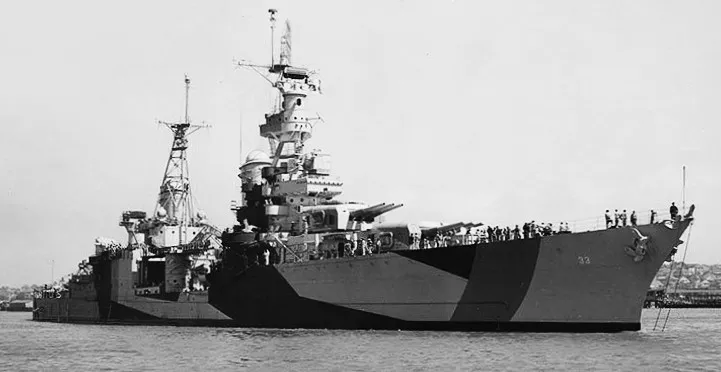
(USN Photo)
USS Portland (CA-33) off the Mare Island Naval Shipyard, California, on 30 July 1944. Her camouflage is Measure 32, Design 7d.
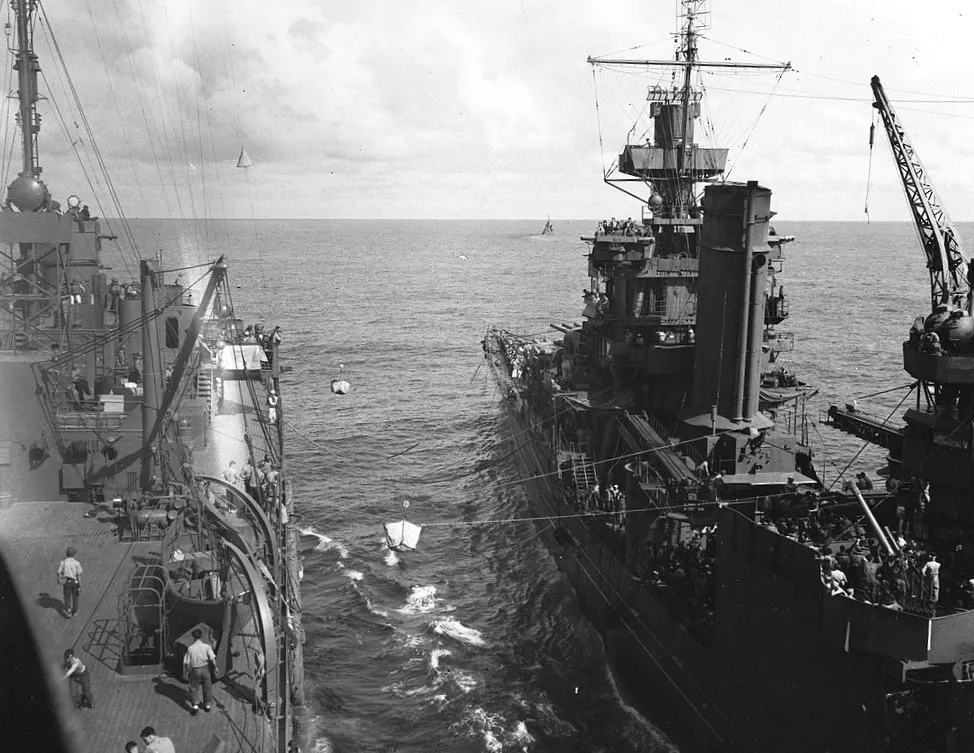
(USN Photo)
USS Portland (CA-33), right, transfers survivors of the aircraft carrier USS Yorktown (CV-5) to the submarine tender USS Fulton (AS-11), left, on 7 June 1942, following the Battle of Midway. Fulton transported the men to Pearl Harbor.
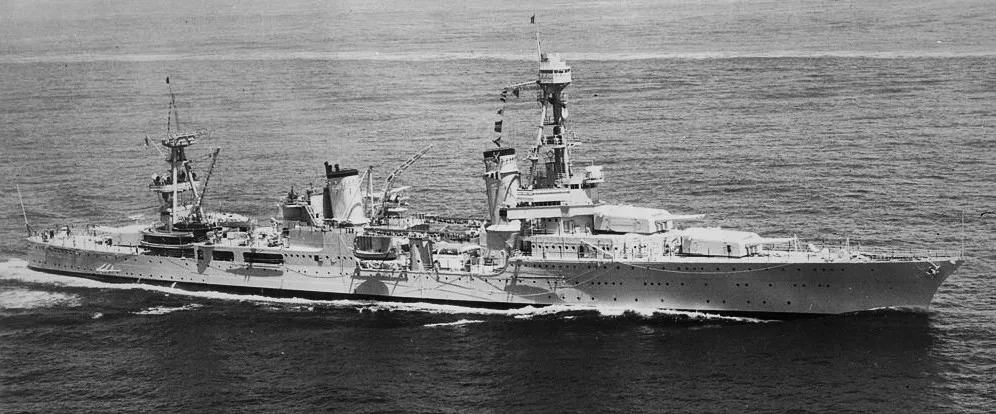
(USN Photo)
USS Portland (CA-33). Aerial, starboard how, underway, 31 May 1934.

(USN Photo)
USS Portland (CA-33) off the Mare Island Navy Yard, California (USA), 30 July 1944. Her camouflage is Measure 32, Design 7d.
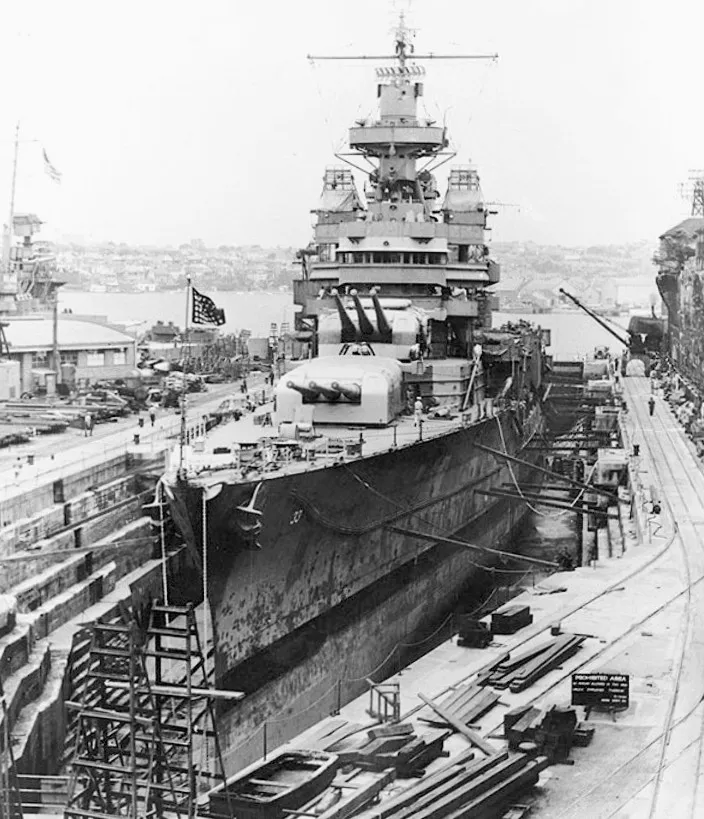
(USN Photo)
USS Portland (CA-33) in a drydock at the Cockatoo Island Dockyard, Sydney, New South Wales, Australia, circa in late December 1942, while under repair for torpedo damage received in the Naval Battle of Guadalcanal on 13 November 1942. She arrived at Sydney on 30 November but did not enter drydock until 24 December after USS Chester (CA-27) and USS New Orleans (CA-32) were repaired. Note the arrangement of gun directors on her forward superstructure: main battery director atop the foremast, with FC fire control radar; and a secondary battery director, with FD fire control radar, on each bridge wing. Also note this ship's external degaussing cables, mounted on her hull sides.
USS Indianapolis (CA-45)
_underway_at_sea_on_27_September_1939_(80-G-425615).webp)
(USN Photo)
USS Indianapolis (CA-35) underway at sea on 27 September 1939.
USS Indianapolis (CL/CA-35) was a Portland-class heavy cruiser of the United States Navy, named for the city of Indianapolis, Indiana. Launched in 1931, she was the flagship of the commander of Scouting Force 1 for eight years, then flagship for Admiral Raymond Spruance from 1943 to 1945 while he commanded the Fifth Fleet in battles across the Central Pacific during the Second World War.In July 1945, Indianapolis completed a top-secret high-speed trip to deliver uranium and other components for "Little Boy", the first nuclear weapon used in combat, to the Tinian Naval Base, and subsequently departed for the Philippines on training duty. At 0015 on 30 July, the ship was torpedoed by the Imperial Japanese Navy submarine I-58, and sank in 12 minutes.Of 1,195 crewmen aboard, about 300 went down with the ship. The remaining 890 faced exposure, dehydration, saltwater poisoning, and shark attacks while stranded in the open ocean, with few lifeboats and almost no food or water.The Navy learned of the sinking four days later, when survivors were spotted by the crew of a PV-1 Ventura on routine patrol. A U.S. Navy PBY flying boat crew landed to save those in the water. Only 316 survived. No U.S. warship sunk at sea has lost more sailors.On 19 August 2017, a search team financed by Microsoft co-founder Paul Allen located the wreckage in the Philippine Sea lying at a depth of approximately 18,000 ft (5,500 m).[5] On 20 December 2018, the crew of Indianapolis was collectively awarded a Congressional Gold Medal. (Wikipedia)
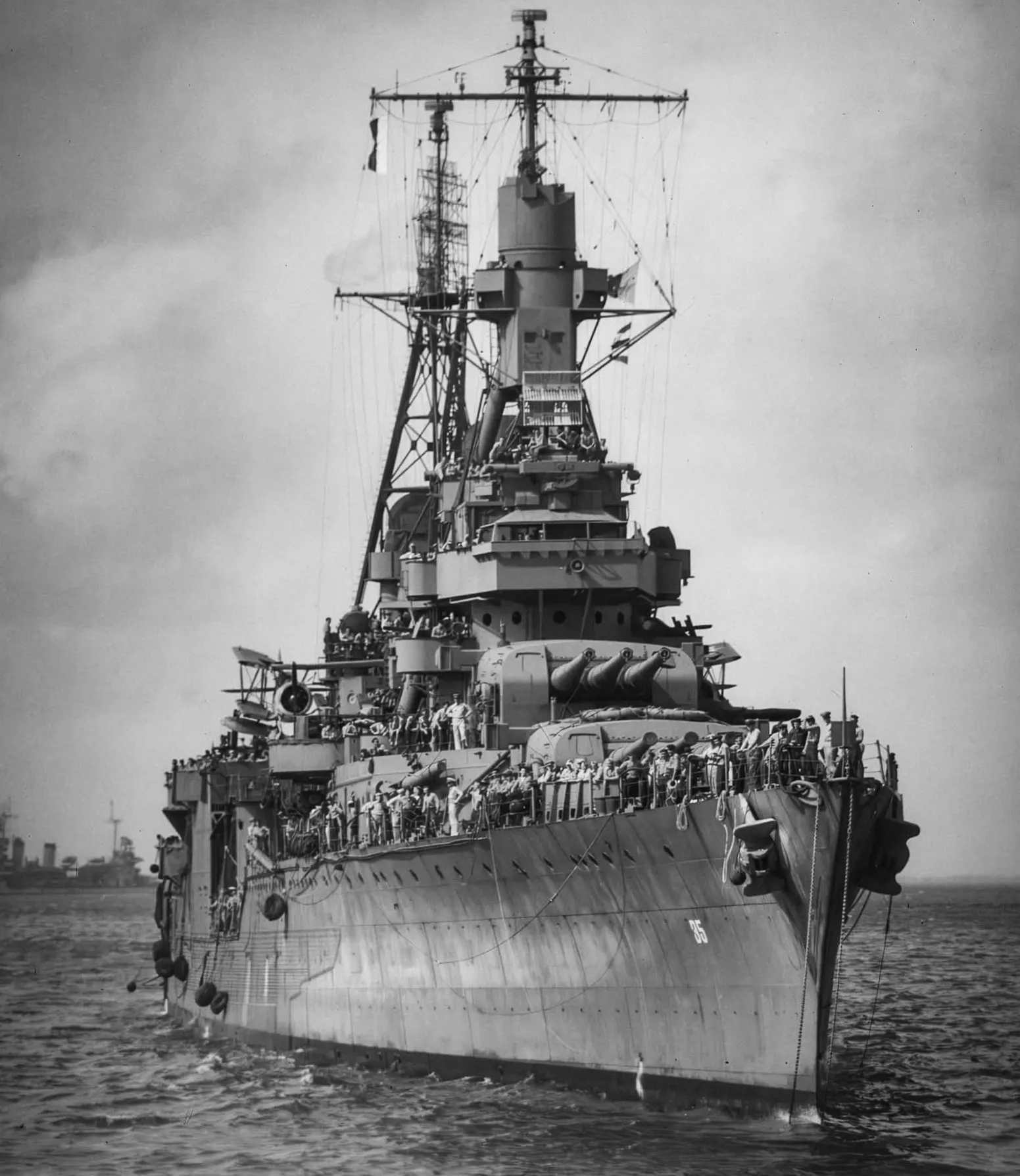
(USN Photo)
USS Indianapolis (CA-35) late in the war.
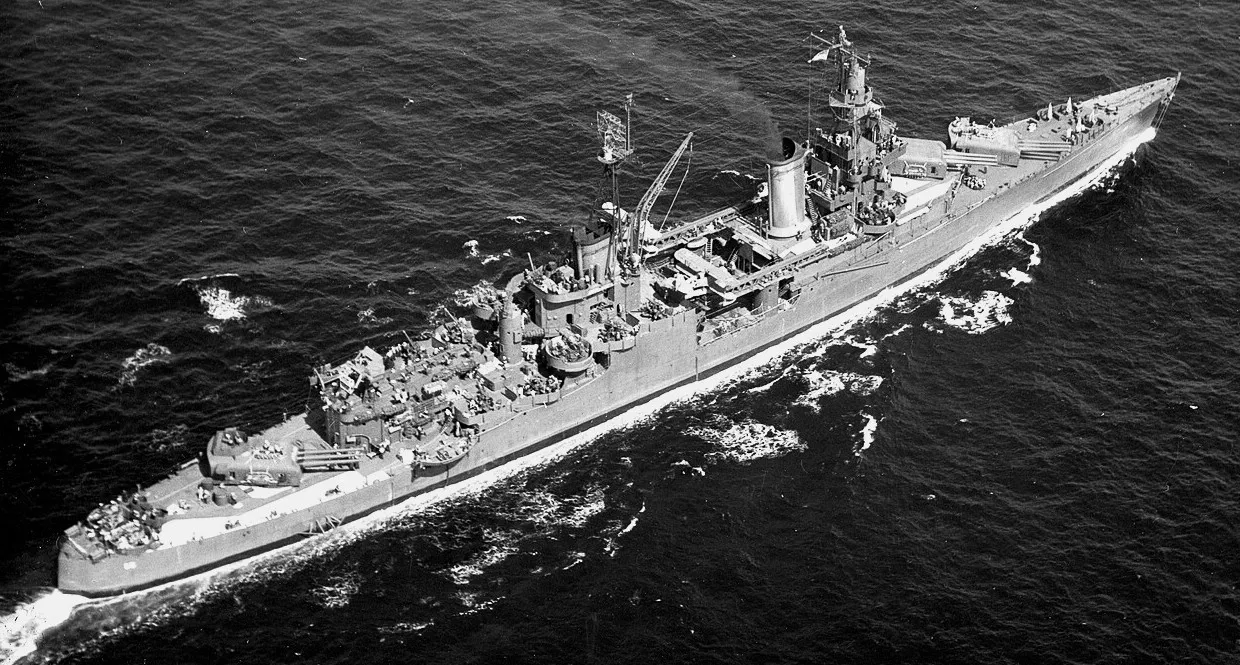
(USN Photo)
USS Indianapolis (CA-35) underway at sea between May 1943 and May 1944. She is painted in Camouflage Measure 21.
_underway_in_1939.webp)
(USN Photo)
USS Indianapolis (CA-35) underway in 1939. An Omaha-class light cruiser and several Clemson/Wickes-class "flushdeck" destroyers are visible in the background.
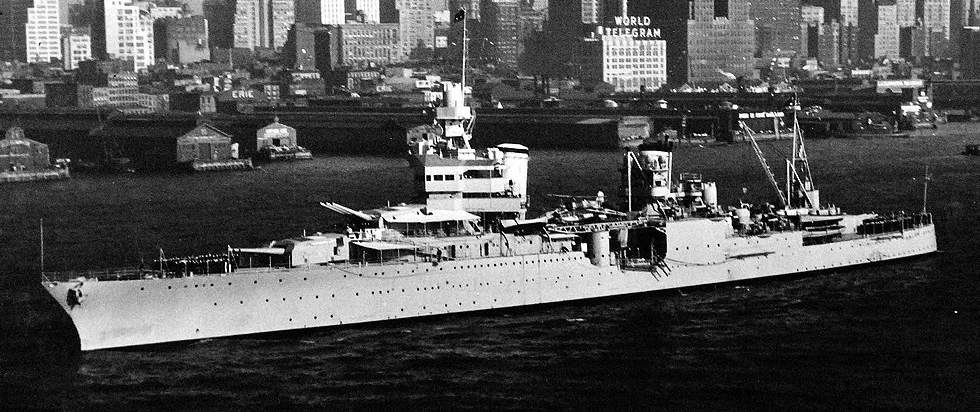
(USN Photo)
USS Indianapolis (CA 35) entering the Hudson River, New York City, New York, 31 May 1934.
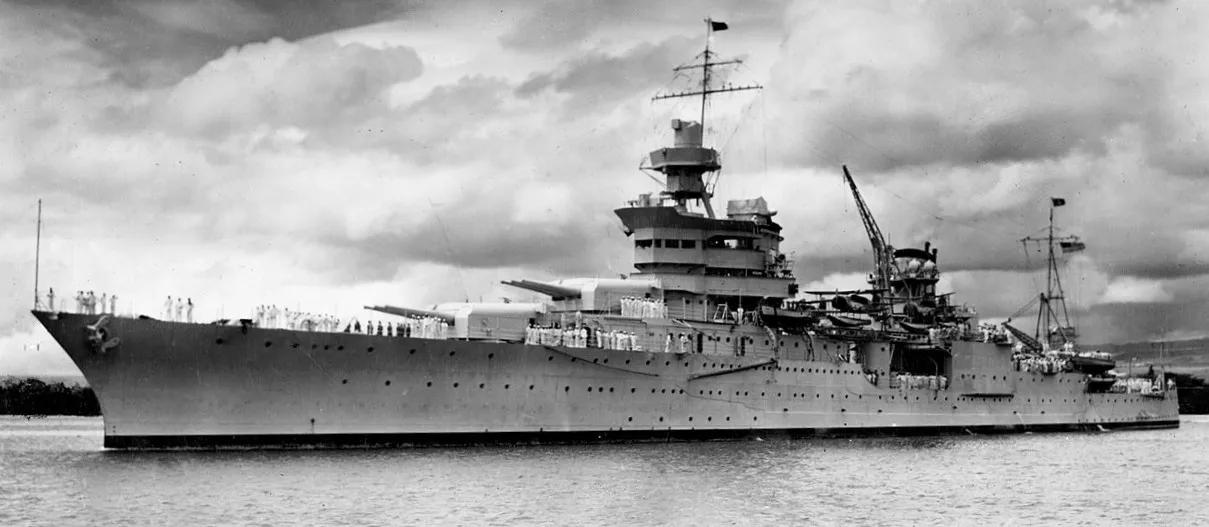
(USN Photo)
USS Indianapolis (CA-35) at Pearl Harbor, Hawaii, circa in 1937.
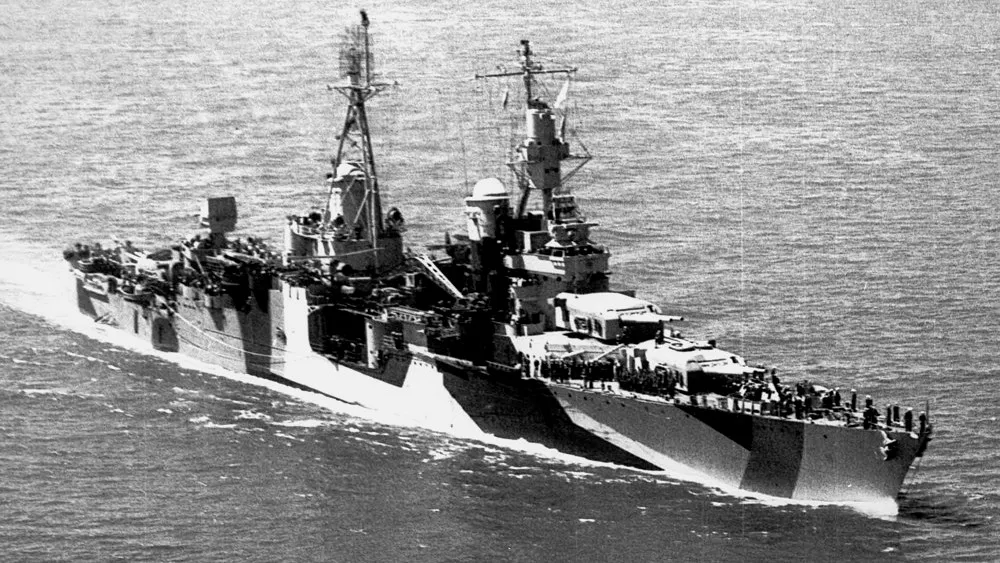
(USN Photo)
USS Indianapolis (CA-35) underway in 1944. She wears Camouflage Measure 32/7D.
_off_the_Mare_Island_Naval_Shipyard_on_10_July_1945_(19-N-86911).webp)
(USN Photo)
USS Indianapolis (CA-35) off the Mare Island Naval Shipyard, California (USA), on 10 July 1945, after her final overhaul and repair of combat damage. The photo was taken before the ship delivered atomic bomb components to Tinian and just 20 days before she was sunk by a Japanese submarine.

